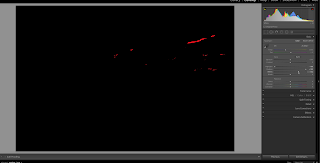Before you even start shooting you should think about what you want to shoot, what you'd like to achieve with your image.
Summer days are really long here in Sweden, so it's kinda out of office hours you have the best light for shooting both a sunrise and a sunset. As we are slowly easing into autumn, the times are getting better for getting that magical morning (and evening) light.
So last night I set my mind to shooting a sunrise. Preparation started with:
- checking the weather. I don't want too much clouds in my images (nor too little for that matter).
- checking the times for the sunrise and where does the sun actually rise? Yeah, I know, in the east. But where exactly will be the best spot in my immediate surrounding to see that sunrise? Hurrah for Google, we found this great site to answer just these questions.
With both the weather and the sunrise details checked, we planned the location: a jetty close to Tibrandshögen here on Rödön. It's alway nice to shoot close to the water to get beautiful reflections. Composition wise it's best to have a decent foreground when shooting your sunset. Use for example the stones in the water, a jetty or a human being.
And then ofcourse, I needed all my equipment (plus some more):
- Camera (batteries fully charged ofcourse)
- Filters (ND/ polarized)
- Tripod
- Remote control (or use the timer of your camera) to avoid camera shake
- Food/drinks
- Warm clothes
- Phone (to check the time)
Luckily, the weather prediction was spot on this morning at 5!
I made sure to be at the location an hour before the actual sunrise. This way I caught the beautiful soft light of the blue hour. This blue hour is between an hour before sunrise and the actual sunrise
I made sure to be at the location an hour before the actual sunrise. This way I caught the beautiful soft light of the blue hour. This blue hour is between an hour before sunrise and the actual sunrise
Blue hour is the period of twilight each morning and evening when the sun is a significant distance below the horizon and the residual, indirect sunlight takes on a predominantly blue hue. This effect is caused by the relative diffusibility of short blue wavelengths of light versus the longer red wavelengths. During the blue "hour" (typically the period is about 40 minutes in length), red light passes straight into space while blue light is scattered in the atmosphere and therefore reaches the earth's surface.
When the sun is above the horizon it's called the Golden hour.
In photography, the golden hour (sometimes known as magic hour, especially in cinematography) is a period shortly after sunrise or before sunset during which daylight is redder and softer compared to when the Sun is higher in the sky.
With this picture you can easily understand the blue and golden hour:
In photography, the golden hour (sometimes known as magic hour, especially in cinematography) is a period shortly after sunrise or before sunset during which daylight is redder and softer compared to when the Sun is higher in the sky.
With this picture you can easily understand the blue and golden hour:
And as you can probably imagine by now: it's the opposite way during the sunset.












































